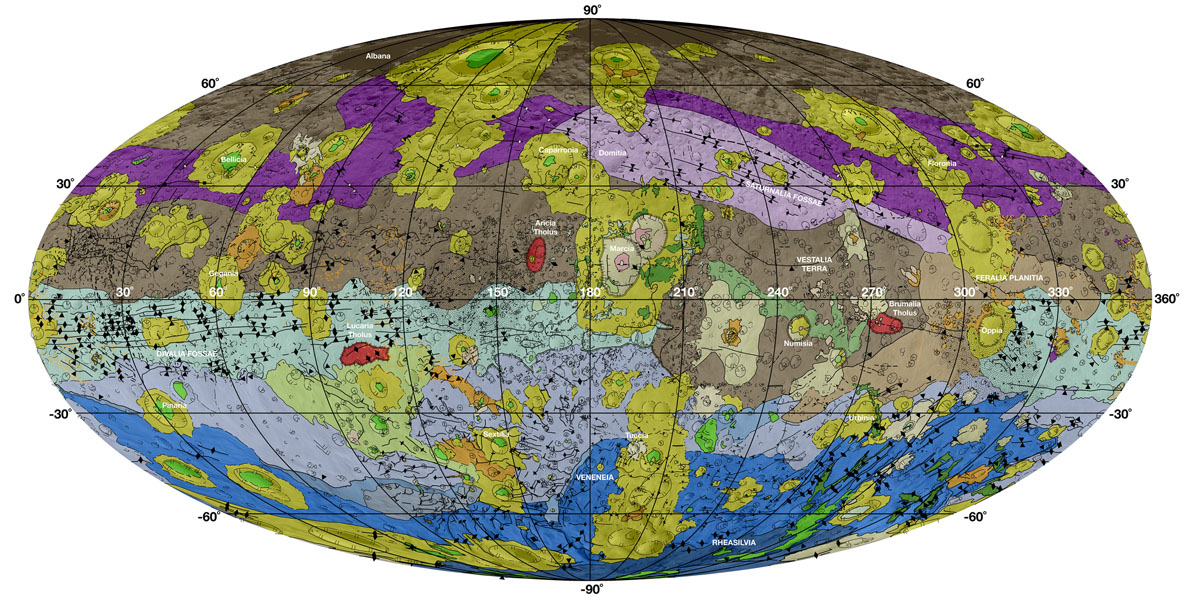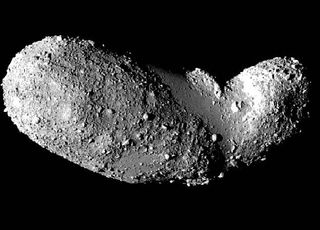This Map of the Huge Asteroid Vesta Is the Best Geologic Look Ever

High-resolution new maps show the cratered, rocky surface of the huge asteroid Vesta in unprecedented detail, researchers say.
Images captured by NASA's Dawn spacecraft were woven together to create geologic maps of the giant asteroid Vesta. The maps — the most detailed ones yet of of Vesta's surface features — serve as a geologic record of the asteroid that astronomers can compare to other planets and celestial bodies, researchers said.
Scientists combined 15 separate maps into one Vesta uber-map, which shows that meteorites have pummeled the asteroid since its formation about 10 million years after the birth of the solar system. Astronomers can piece together Vesta's geologic timeline based on the sequence of meteorite impacts.
The brown colors on the map show the oldest and most heavily cratered areas on Vesta, while purple shows where Vesta was struck by two large impactors; the light purple and dark blue colors show the interior basins of the two massive impacts. Greens and yellows show the youngest material on Vesta, which likely came from landslides or later meteorite strikes, researchers said.
A special camera onboard the Dawn spacecraft made the geologic maps possible. The camera uses seven different color filers that help analyze the different minerals covering Vesta's surface. The photos were used to create 3D topographic models, which were then converted into maps of the surface.
It took over two years to sift through all the images and create the maps, said David Williams of Arizona State University, one of the lead scientists on the project. The maps were published this week along with a series of papers in the journal Icarus.

Vesta and other asteroids like it are relics from the birth of our solar system. Astronomers study them to learn more about how the solar system formed. Many asteroids also carry organic compounds and could help explain how life on Earth began.
Get the Space.com Newsletter
Breaking space news, the latest updates on rocket launches, skywatching events and more!
Dawn is now on its way to the dwarf planet Ceres, and will likely arrive in March 2015.
Follow Kelly Dickerson on Twitter. Follow us @Spacedotcom, Facebook or Google+. Originally published on Space.com.
Join our Space Forums to keep talking space on the latest missions, night sky and more! And if you have a news tip, correction or comment, let us know at: community@space.com.

Kelly Dickerson is a staff writer for Live Science and Space.com. She regularly writes about physics, astronomy and environmental issues, as well as general science topics. Kelly is working on a Master of Arts degree at the City University of New York Graduate School of Journalism, and has a Bachelor of Science degree and Bachelor of Arts degree from Berry College. Kelly was a competitive swimmer for 13 years, and dabbles in skimboarding and long-distance running.












